Rachel Neumeier's Blog, page 298
June 27, 2016
Top Fifteen Books of 2016 (So Far)
Well, here we are, halfway through the year, more or less. So far I’ve read 46 books, it appears, not counting anything I forgot to note down (I’m sure there were a couple; there always are), and also not counting anything I DNFed. So I’m on track to read fewer than 100 books this year. That’s pretty terrible, but it does indicate (accurately) that I’ve been spending a lot of time writing, so there’s that. Besides, I also read four novellas and the other shorter work connected with the Hugos, which took a good bit of time, too.
Still, the end of June seems like a good time to pause and look back over the first half of the year. We’re past the longest day of the year, you realize, of course. Jos turned six months old on the 21st of June (and got an extra cookie to celebrate.) Kind of fun to have his birthday on the solstice, now that I think of it.
I love the long days of summer! But I’m looking forward to someday seeing a break in this dratted heat. Here in south-central Missouri, we’ve kicked off our annual summer drought early, which is grim for the younger plants and the nursery cuttings, but might (eventually) cut down the Extreme Insect Situation, I hope. And I suspect the sudden dire lack of rain may have contributed to our being able (at last) to conquer the appalling brown rot situation in the orchard. I mean, you have no idea. It’s been dreadful. We’ve lost the entire stone fruit crop for several years running. This is with aggressive spray schedules. But this year so far I’ve only removed and disposed of a very few infected peaches and one plum. The plucots have already been turned into a lot of very fine cobbler filling. Mmm.
Meanwhile, the unpleasant muggy heat keeps me indoors at the keyboard, so that’s good, I guess.
But I was about to look back over the year-in-books. Fine. Let’s see:
Okay, in January I read nine books. I must have been working on something or the number would be higher. Yeah, don’t remember, that was a long time ago. Some revision or other, no doubt, or maybe Black Dog short stories, or both. Anyway, out of the books I did read, the month produced one clear winner: POWERS by Hetley (Burton). Wonderful book.
In February I read only four books. I really do wonder what I was working on, but not enough to bother checking the dates on various files. Anyway, it was a really good month! Because I read two books that were so wonderful I can’t choose between them: BONE GAP by Ruby and SILVER ON THE ROAD by Gilman.
In March, let’s see, looks like I read eight books. Four were particularly good – no surprise; I was mainly reading 2015 releases that had gathered some buzz. My favorites were ARCHIVIST WASP by Kornher-Stace, CARRY ON by Rowell, BRYONY AND ROSES by T. Kingfisher, and THE LONG WAY TO A SMALL, ANGRY PLANET by Chambers. I don’t think I could narrow that set down to just one title, so I’ll just throw all four out here.
The most disturbing book I read in March, by the way, was HALLUCINATIONS by Oliver Sacks. It was way more disturbing than THE MIND’S EYE, which I also read pretty recently. Eventually I decided it’s like this: you know you might go blind. Everyone knows that. It would be upsetting, but the mere idea of visual deficits doesn’t shake your idea of yourself or of the order of things. But the idea that you can’t trust your mind, that there are types of hallucinations where you see crazy things but are convinced they’re real and it’s impossible to rationally reject their reality . . . yeah, please, no. That’s just . . . really disturbing.
Anyway, April. I know what I was working on during the first half of April. (And all of March, and oh, I just bet that was also part of February.) I was doing a final fairly big revision to that manuscript that was due to Saga on March 15th. THE DARK TURN OF WINTER if the title isn’t changed (again). I sent it off April 15th. What a lot of unexpected work that was. Let me see. Yeah, I was reordering events and adding chapters and stuff, I remember that. Well, I really, really hope my editor loves this manuscript and doesn’t suggest anything too huge. Long sucker, too. I hope the length is okay.
Once I sent that manuscript off (finally), I was totally ready for a break. Looks like I only read five books, though. My favorites were CHASE ME by Florand and VISITOR by CJ Cherryh, yeah, how’s *that* for contrasting titles.
I took a serious break during the first half of May, reading twelve books in those fifteen days. The second half of May I really dove into this new project NO FOREIGN SKY and also worked on the third Black Dog book, SHADOW TWIN, but during the first half I don’t think I ever turned on my laptop. Let’s see. Right, I finally read the sequel to Hetley’s POWERS, which is called DOMINIONS. Loved it. Likewise ASH AND BRAMBLE by Sarah Prineas, and also THE IMPROBABLE THEORY OF ANA AND ZAK by Kircher. And I started THE STEERSWOMAN by Kirstein. Hard to pick a favorite out of those four. If I was really pressed to the wall, I might go for the Steerswoman series. It’d be hard to write something more completely aimed at me than this series. I’m sure I saw Rosemary Kirstein say somewhere that she’ll be at Worldcon. I hope so, and I hope I bump into her.
And of course during June, I read SEVENEVES. What a monster. But hey, it made the entire Hugo season worthwhile for me personally, as there is zero chance I would have read it without its nomination to give me a push.
And one more, to bring the number of favorite-books-this-far up to fifteen, since it would be too hard to cut the list back to ten.
I just finished THE NARGUN AND THE STARS by Patricia Wrightson. A wonderful story that beautifully evokes the Australian setting. I don’t know whether this is technically MG or YA; I could see readers of all ages enjoying it – including adults, of course. I mean, I did.
It was night when the Nargun began to leave. Deep down below the plunging walls of a gorge it stirred uneasily. It dragged its slow weight to the mouth of its den; its long, wandering journey had begun.
The first chapter, about the Nargun, is really a prologue. The main character is actually Simon, who is, I suppose, about twelve or so. I guess that means this book would probably be considered MG. Anyway, Wrightson does a wonderful job with Simon and with the older people he’s gone to stay with, his mother’s second cousins, Edie and Charlie. This book isn’t flawless, and in fact here is the main flaw: it may occur to the reader that it’s strange Simon never once thinks about his parents, quite recently killed in a car accident, once he’s gone to join Edie and Charlie. I mean, not past the first day. Never. Once this occurs to you, it seems like a pretty serious omission, however wrapped up in his new life Simon may be, what with the Australian trickster-figures and the Nargun and everything.
However, I particularly loved how Wrightson handled both Edie and Charlie. They are so perfectly drawn and, I think, are the characters who provide the story with enough depth for an older reader to enjoy reading it. If the focus had been more limited to Simon and the Potkoorok and so on, I think the story would be far more strictly a children’s book. As it was, it’s a delightful book for anyone.
So, fifteen out of forty-six is about a third. It seems pretty good to have a third of the novels you read turn out to be real winners. Though it’s true I’m leaving out a couple I picked up, read a bit of, and put on the giveaway pile. Still, a very solid year of books so far – I wonder if the top fifteen from the back half of the year can possibly match it?
What are a couple of your favorites from the year so far?

June 23, 2016
Hugo Voting: at last, the novels
Okay, now, listen. I went in knowing, just *knowing* that I was either going to put Ancillary Mercy or Uprooted in the top spot, the other one second. I hadn’t read the other three nominees at the time. I was happy to try The Fifth Season, unhappy about being forced to try Seveneves, and okay if not enthusiastic with trying The Aeronaut’s Windlass.
That’s how I started out.
I have seldom been more surprised in my life as to find myself putting Seveneves in the top spot.
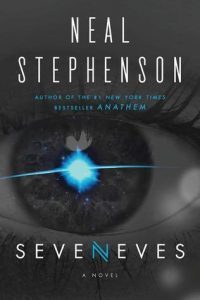
I read part of Snowcrash a long time ago. A smallish part, I believe, but I don’t remember for sure. I read The Diamond Age, but without much enthusiasm. Then I gave up on Stevenson and haven’t touched a book of his since. And then to my astonishment I loved Seveneves. Even though I think of myself as a character reader, basically, and Seveneves involves almost no actual character development as such; mostly the characters are pretty much the same at the end as they were at the beginning. Still, many of the characters have some depth and I liked them; they were just very static. (This is more true of part one, but imo still true in part two.)
Where Seveneves fails: honestly, at nearly 900 pages, it was not long enough. I would have liked a whole middle section, perhaps stretching from setting down in the Cleft to the new fragile population becoming fairly secure. And then break the story into a trilogy, of course. It’s two books jammed together right now; separation would probably improve both and adding a middle volume would have worked for me.
I skimmed every section where Julia was a major player. I hated her. You’re supposed to hate her, of course. Good job with that. I guess you can list Julia and her role as both a good point and a bad point, but if she’d been any more important I would have liked the book a lot less.
Plus, I could not believe how incompetent people were in dealing with Julia, and later with Aida. Otherwise competent people just completely failed to cope, so much so that it was hard to accept. Also, I have to point out, if you can artificially increase heterozygosity, what difference does it make if you have five eves instead of seven? Wow, a lot of complications and two wars would have been prevented if someone had just decided to put Julia and Aida out an airlock, or for that matter simply not to give them equal rights to tweak their children.
Okay, other than that, the science is iffy in places (I mean the biology; I would hardly attempt to criticize the orbital mechanics). I don’t want to say much about it because spoilers would be inevitable.
Where Seveneves succeeds: What a great book to argue about! This is the kind of story where, when you see a plot hole, you figure out a way to paper it over and then argue with friends about whether you’ve plausibly solved the problem. Also the kind of story where everyone can get together and rant about Julia and what they would have done to deal with her. Also the kind where you argue about the events in part two and whether any of that can be made to work and whether it would be worth going through part one to build the society we see in part two.
Aside from all that, this is a tremendous page-turner. For an end-of-the-world book, it’s got such an optimistic tone! It’s definitely can-do competence porn. The reading experience is a lot like reading The Martian. After reading both books, I think I need more stories like this in my life.
Also, the book has great scope and ambition, yet the story itself is extremely straightforward, especially in part one. It’s very easy to understand and connect to, which is one reason the story is so compelling, I think. You get totally drawn in. You root for the good guys and boo the (few) bad guys and very likely learn something about orbital mechanics. In part two, the setting is entirely different and far more socially complex, the plot is not quite so straightforward, the characters are not quite as simple. Part two is predictable in some ways, but it contains a few startling plot twists; it’s a more ambitious book but less of a page-turner. Overall a very different book, but one I enjoyed quite a bit.
Although the characters don’t change much in either half of the book, some lacking anything resembling a character arc, they are actually well drawn and easy to connect to. Single best touch: Ivy and Dinah being friends, even though they are not seen that way by the popular imagination. I enjoyed the implicit comment about how women are viewed as intrinsic rivals versus how a female friendship can actually work.
Why I’m putting Seveneves first: What I want in a Hugo winner is something out of the ordinary, preferably a book that attempts something ambitious and ideally pulls it off. What I also prefer: a book I genuinely enjoyed reading. What I like to see on top of that: a book that’s thought provoking and fun to argue about. Seveneves , despite its faults, delivers on all criteria.
So my final list for novels is as follows:
1. Seveneves.
2. Ancillary Mercy. I went back and forth on this a lot, but Leckie really pulled off a great ending to a wonderful trilogy. Even though she already picked up a Hugo for the first book, I’m fine with the idea of her taking home a second rocket for the third.
3. Uprooted. I re-read a good bit of this one while I was making up my mind. It’s so very different from the two above that it’s like comparing apples to . . . um . . . not oranges . . . perhaps to chocolate cupcakes. Where Seveneves has scope, Uprooted offers a much smaller, more intimate story from a single point of view. It’s quite wonderful. But first, I have a slight preference for SF rather than fantasy for the Hugo (not that important), and second, honestly, I just do not find the ending all that believable. On a second reading, I still feel the ending is too easy and pat given the extreme creepy horribleness of the enchanted forest through most of the rest of the book.
4. Fifth Season. I loathed the main character, Essun. When she killed the townsman who was actually trying to help her — Rask — on page 58, and went on to kill everyone in the town, I quit. I am sorry for Essun’s personal tragedy, but there is absolutely no way that works for me. I can see this book is ambitious. I can see it is well written. None of that could possibly compel me to go on with it. Triple ugh with a cherry on top, and I am going to re-read The Killing Moon and The Shadowed Sun to take the taste out of my mouth.
5. The Aeronaut’s Windlass. I don’t really think there was anything special about this perfectly acceptable adventure story. Five protagonists are a lot for me, especially when none of strike me personally as particularly interesting. No, wait, I did like the etherialists or whatever they were called. Even so, when I reached the end of the sample included in the Hugo voters packet, I didn’t feel any particular impulse to go on with it. Also, I am just so over talking cats. Sorry. If you’re into talking cats, hey, this story is probably a good one to try.
To recap the other Hugo categories:
Fan Writer, Fanzine, Graphic Story, Best Dramatic Work

June 22, 2016
Ah, yes, that thing with turning Captain America into a long-time Hydra agent
I’m sure you’re aware of that thing. I sure am and I don’t follow comics at all. I trust your reaction was the sane and reasonable “HORRIFIC CLUELESS INSANITY” with flung objects, which is how all right-thinking people naturally reacted to the thing about Captain America actually being evil.
Here is a post from Renay at Lady Business: Captain America: Steve Rogers – The Only Power Left to Us is Money, in which she sanely and rationally suggests a boycott.
Boycotts work when they target specific behavior. A wholesale Marvel/Disney boycott is ineffective; they’re diversified (curse them for being smart at business, and also, billionaires). cover of Captain America: Steve Rogers #1 with Steve, Sam, and Sharon running toward the viewer Refusing to buy and removing from your pull or digital subscription list Captain America: Steve Rogers #2 (June 29, 2016) and all subsequent issues will be more effective than swearing off all Marvel comics. Also, it doesn’t punish other creative people at Marvel who had no control over this situation. That sends a message to Marvel, The Company: this comic/plotline is not profitable! That’s easier for them to grasp than nuanced discussions about history and cultural respect that it’s clear they have no interest in listening to at this particular time. Although it doesn’t hurt to tell them, either, by writing emails or letters to outline exactly why you aren’t supporting the comic. This post has a longer list on how to make financial decisions that impact this specific comic that are active rather than reactive.
I don’t know that this suggestion is necessary — is anyone planning to buy Issue #2? Anyone? Surely not. Sheer revulsion should do the trick without an official boycott. But hey, I hope the half dozen people were were going to go on with the comic decide to join this boycott instead.
Anyway, if by chance you were not aware of this thing with turning Captain America evil, this post offers a good roundup of links, so you can click through and find out all about it. As far as I’m concerned, it takes the number one spot for Most Awful Plot Twist Ever. And as I say, I don’t even follow comics.

REJECTED
Here’s a post from Janet Reid, about the reasons she turned down 25 queries. This kind of list can be really interesting if you’re trying to go the traditional-publishing route, and actually I still find posts like this interesting today. There’s something about that list format, and evidence from the real world is always fascinating. What ARE people querying? How ARE their queries failing? — or succeeding, because Janet says she went on to request additional material from four other queriers, but this post is not about that.
So, click through to read the whole list, but I will summarize:
Category A: This is memoir, but your story does not feel like anyone not you would find it compelling or relevant. Interesting events are all very well, but a memoir has to feel relevant to the reader, not just to the author. Two queries, maybe three.
Category B: You have no plot. Four queries, maybe more.
Category C: I have no idea what this book is about. Two queries.
Category D: Bad writing (I am summarizing more extensive comments and lumping stuff together; click through to see it all broken down). Four queries.
Category E: Your book doesn’t sound like it would appeal to me personally at all, but might be okay for someone else: Five queries
That’s most of them. There are a few others that make me really curious, like: “Querier does not understand what ‘a novel’ means.” Oookay, what could that query have looked like? I guess we’ll never know.
Someone once, on hearing that I write, sent me a free copy of his ebook. (I am too polite to refuse such offers.) His novel-like work had quite good dialogue, but all description and movement was described more like he was giving stage directions. This is what comes to mind for me when I see things like “Does not understand what ‘a novel’ means.”

June 21, 2016
Keep your eye on the prize, your shoulder to the wheel, your nose to the grindstone…
In other words, sometimes you must resist the lure of the Bright Shiny New Idea.
Here’s a post about that, from Janice Hardy at Fiction University: Getting Your Novel to the Finish Line: Resisting the Shiny New Idea
The Shiny New Idea is a tempting creature, frequently appearing when we’re stuck on or bored with our current work in progress. For whatever reason, something new becomes extremely appealing. Since we’re still working on a story, it feels like we’re being productive, until we step back and realized we’ve written the beginnings to seven novels and haven’t finished a darn thing.
This caught my eye, because I’m in that exact situation right now — I’m no longer so enthused about my current WIP and all kinds of things are looking shinier. Like the third Black Dog book — which is okay — and suddenly wanting to take another look at a long-finished but unpublished manuscript that’s sitting right here . . . ah, yes, the lure of the new and shiny project, or perhaps any project that is not the actual WIP. Yes, yes. Been here before.
Usually this hits me at the middle of a work in progress. This time, well. If this is the middle, it is certainly the very latest part of the middle. It’d be more correct, probably, to say that I’m now at the beginning of the end. It’s an odd time to lose enthusiasm (for me). But flagging interest is certainly nothing uncommon. I disagree with Hardy’s prescription, though. Putting the manuscript aside would be a terrible idea. No, no. The thing that works is a strict minimum daily wordcount. Also the knowledge that interest will probably rekindle in thirty to fifty pages. Which in this case will probably be right in time for the denouement. I nearly always like the denouement best anyway.
You know what I actually think happened is: once I (finally) worked out the rest of the plot, I felt like I should be done. Wait, I figured out the end, why do I have to keep putting down words? Like that. If you ever feel like that, I hear it’s not uncommon for non-outliners to have that reaction to working out an outline. Usually I’m so incapable of working out an outline the whole question is irrelevant.
Anyway, at least I know if I stick to the 1500-2000 words per day thing, I really will hit the end soon. I’m just about at 350 pages now.
All right, back to Hardy’s post: dissecting the shininess problem. She identifies six types of failure-to-finish problems:
1. You’re bored with your WIP
2. Your WIP has a problem and you don’t know how to fix it
3. You’re scared you’re not a good enough writer to finish a novel
4. You never were that enthusiastic about this particular project
5. You lack the discipline to finish what you start
6. You’re distracted by the illusion of The Project That Will Lead to Fame and Fortune
It’s a pretty good list, I think. #1 and #5 look pretty similar to me. In both cases, the minimum daily wordcount ought to work. It doesn’t even have to be a high word count; 500 words a day will get the job done in well under a year, even if you’re writing a fairly long book.
I’ve certainly had issues with #2 there from time to time. That’s where you force yourself forward and then find yourself re-writing a huge swath of the middle. Usually the middle, anyway, for me. For me, it’s better to force it and then re-write than stop. Forcing myself forward is how I figure out what’s gone wrong and how to fix it.
I think the only way to deal with #3 is to finish multiple novels, so that when you feel like you can’t finish the current one, you have countervailing evidence that you totally can. I don’t think finishing one novel is enough evidence for those of us who deal with an average amount of insecurity. But after you’ve finished four or so, it’s hard to believe you can’t finish another.
Hardy picks out #4 as the one where you should just drop it and go to a new project. I agree. If you just jumped on a current fad because you hope the book will sell, even though you really don’t care for dystopias or werewolves or whatever, yeah, more than likely you should step off that bandwagon and write something you actually want to write. The fad will probably have moved on before you finish the book anyway.
Anyway, if you’re interested, click through to read all the descriptions and solutions.

Recent Listening: Cotillion by Georgette Heyer
So, I recently was compelled to drive to St. Louis and back, which was actually enjoyable for once as it gave me a chance to finally finish listening to COTILLION.
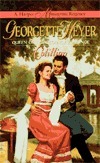
My goodness, I hated this book so, so much. Until I finally (FINALLY) figured out that Kitty was never in a million years going to marry Jack. I think I must have been particularly slow to grasp this essential fact. Surely most readers get it before they’re halfway through the book, right?
What a total ass Jack is. Yet I’d just listened to THE DEVIL’S CUB, and Jack certainly isn’t much worse than Dominic, at least on the surface. I hereby declare that this reading order was what slowed me down in figuring out where COTILLION was actually headed, since I need an excuse to grasp at.
Here’s what Goodreads says about COTILLION:
Kitty Charing can inherit a fortune from her irascible great-uncle Matthew when she marries one of her cousins. Kitty is not wholly averse, if the right nephew proposes. Unfortunately, Kitty has set her heart on Jack Westruther, a confirmed rake. To make him jealous and to see a little more of the world, Kitty convinces cousin Freddy Standen to pose as her fiance. In London with his family, she hopes to render the elusive Jack madly jealous.
New friends embroil her in their romantic troubles … her French cousin, Camille, a professional gambler, has won the heart of Olivia, in turn the object of Jack’s dishonorable intentions. Doltish cousin Lord Dolphinton has fallen for a merchant’s daughter in conflict with his mother. Kitty herself wonders who is really right for her.
That bit about Kitty wondering who is right for her is basically not true until way into the book, and she never looks at the reader and declares, “Hey, you know, Freddy is growing on me.” She thinks she really wants Jack for a long time, is what I’m saying, and then the reader isn’t shown her wondering about Freddy, although of course it’s clear enough once you figure it out. I had to realize that for a male lead, Jack was just not getting much time on stage . . . and every time he did appear, he looked like a worse choice . . . and finally I was like, OH, WAIT, OF COURSE SHE ISN’T GOING TO MARRY JACK.
For me, Kitty is just okay as a heroine. I mean, she’s fine, but not particularly special. But Freddy, now. He’s so not your typical male lead. Wow, no. At first I didn’t particularly care for him either, and yet he grew on me exactly as he grew on Kitty, until by the end I couldn’t WAIT for him to declare himself. That he knocked down Jack in the process was definitely icing on the cake.
Freddy’s not your dragon slayer type of hero, being neither especially amazing physically nor particularly clever. On the other hand, if you can slay a dragon with kindness, generosity, unerring courtesy, impeccable good taste, and the ability to always produce exactly the right turn of phrase for any social situation, then Freddy’s your man. Oh, and when you need him, there he is. Dependable Freddy. In COTILLION, Heyer turns sheer dependability into the stuff of romance, and pulls it off beautifully. Good for her! Now this might be my favorite one of hers, and I look forward to reading or listening to it again in the next couple of years.
Also, while listening to COTILLION, I got a neat idea for a new book that draws on a kind of similar situation. I don’t know if I’ll ever write it, and if I do I’ll offset the Regency details into some kind of secondary world, but I did take quick notes about the situation and story. Maybe someday . . .

June 20, 2016
2016 Manly Wade Wellman Award Nominees
Via File 770, the Manly Wade Wellman Award Nominees.
Were any of you aware of the Manly Wade Wellman Award? I was not. It honors writers from North Carolina, I see. That seems rather, uh, circumscribed. Also, what about people born in North Carolina who moved? Do they count?
Never mind, never mind. This just caught my eye because it’s been ages since I read anything by Wellman, but I have fond memories of the Silver John stories.
Anyway, the nominees, in case you’re interested:
Raising Hell by John G. Hartness (Falstaff Books)
The Mussorgsky Riddle by Darin Kennedy (Curiosity Quills)
Iron and Blood by Gail Z. Martin and Larry N. Martin (Solaris Books)
Vendetta by Gail Z. Martin (Solaris Books)
War of Shadows by Gail Z. Martin (Orbit Books)
Castle Hangnail by Ursula Vernon (Dial Books)
There’s Ursula Vernon again! For an author I only heard of for the first time this year, she sure seems to be everywhere. No doubt I’ve been looking past her name for a decade or more without ever noticing her. New-to-me authors always seem to have been around for ages before I encounter their work.
But back to this idea of a honoring North Caroline authors! Who can think of a book with a rural Carolina kind of setting (even if not set in Carolina exactly?). I can think of one!
Doranna Durgin’s SEER’S BLOOD is set in the Appalachians. Quite a good book. Durgin always does a good job with dogs and horses, I think.
I’m forgetting a rather good set of mysteries set, I think, in the Appalachians. I’ll have to see if I can remember, because I know I did want to go on with that series…

Hugo voting: the hardest categories
Semiprozine
My goodness, what a lot of material to look at. And several of the entries are so impressive. I don’t like everything about any nominee; I don’t dislike everything about every nominee. Of course, that’s how it’s going to be if each nominee offers several stories for consideration — and most offer either a LOT of stories or multiple stories plus essays, reviews, and poems. I had a really hard time with these, I’m not kidding. It’s possible I might still change my mind about the order I put these in, especially if I have time to read more stories and essays, but here’s how I’m leaning and I feel the nominees are fairly likely to stay in this order:
1. Uncanny. There were so many well-known authors who contributed to this sample issue: Cat Valente, Kowal, Bear, E Lily Yu. This issue included both “Folding Beijing” and “Wooden Feathers,” and while I didn’t really like the former, you know how much I loved the latter. In addition, “In Libres” by Bear is a really fun story. I didn’t read the others, but I might yet if I have time. I wasn’t nearly so impressed with all the essays, but some were good and the stories seemed top-notch.
2. Strange Horizons. The sample issue offered three stories, three interviews, two reviews, two essays, and six poems. Some really well-known writers are represented, such as Jane Yolan, who had a poem in this issue (which I didn’t really like, but there you go). The story “The Game of Smash and Recovery” by Kelly Link is top-notch, if a bit horrifying. I was not very into the reviews or essays, which seemed to possibly be trying too hard to be deep, at the expense of clarity. I do like the mix of essays and stories and other things, though.
3. Daily SF. Wow, very impressive, delivering a story most days in most months. Definitely an A for effort. No way I’ll be reading enough stories to make any kind of judgment about the overall quality, but really, wow.
4. Beneath Ceaseless Skies – nothing but stories, and not a great number of those. I read two of them and they were both well-written and good.
5. Sci Phi Journal – I gather this is supposed to be kind of an intersection of SF and philosophy; the sample issue offered stories and essays in pairs. To me it seemed like the authors were trying to address big ideas but often in rather facile essays. The stories I read were not that great, though of course I like the ghost dog story.
Best professional artist
1. Larry Rostant – he’s got a lot of good book covers, but wow does he like black. Very grimdarky kind of images, mostly. But not entirely, because there was one book by Kowal, let’s see if I can find it . . . here it is:
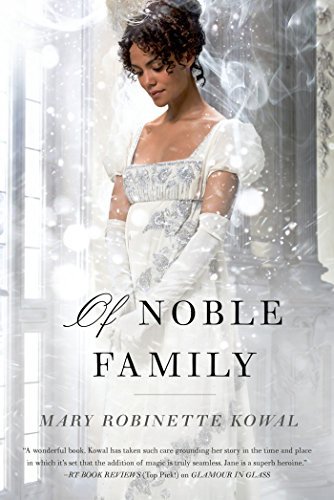
Isn’t that lovely? So Rostant’s range does expand out of grimdark sometimes. Plus, I prefer to look at book covers when sorting out artists for the Hugo. To me, book covers seem like kind of the point of the category.
2. Michal Karcz – I really liked a lot of his work. Which in general involves a small figure in a desolate landscape. There seem to be lots of post-apocalyptic scenes, like so:

These are so well done and evocative. But they are also rather unrelentingly grim, even more so than Rostant’s covers. This is one artist I think I would have liked better if he’d included fewer works in the Hugo voters packet rather than more. Even though I liked a lot of his work, some a great deal, halfway through I was like: GRIM GRIM GRIM MY GOD MAN CAN’T YOU EVER LIGHTEN UP?
3. Larry Elmore. Now, Elmore didn’t include anything in the packet, but his work is super easy to find online and there is so much of it. His style doesn’t really appeal to me and I must say, the “pinups for the teenage boys” thing makes me roll my eyes. Every now and then he puts actual clothing on his buxom women, though. Here’s a typical example:
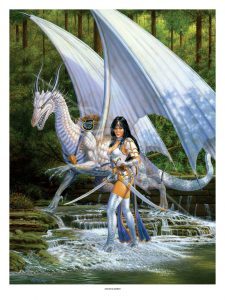
Larry Elmore could switch places with the nominee below; I probably won’t decide until the last second when I’m actually entering votes — probably next week.
4. Lars Braad Anderson included many fewer works in the packet, including three boring (to me) spaceship book covers plus a really nice photographic-looking waterwheel winter scene. Here it is:
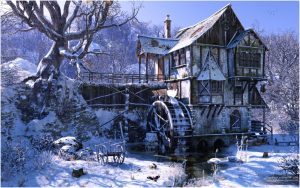
That’s beautiful, isn’t it? Looks like Anderson has lots of prints for sale, including this one; if you google his name and “gallery” it pops right up. The spaceships are completely boring to me, though. I realize there are a good many generic spaceship covers on SF books and I really do not even glance at the cover at all in those cases. That’s just me, obviously, but there it is.
5. Abigail Lawson. She has one style, which is rather cartoony; and a quite limited black/white/red palette. She doesn’t seem to do book covers at all, but perhaps some kind of comic or web comic? She doesn’t fit my idea of what this category is for, but I don’t like to use No Award, so I’ll probably just put her last.
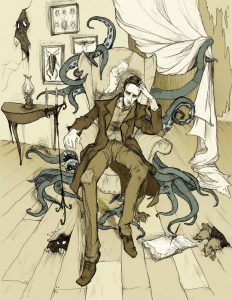

June 19, 2016
Great dads in SFF
Happy Father’s Day to all the dads out there! In a minute I need to go ice my dad’s favorite cookies, but first let me draw your attention to this post at Barnes and Noble, about great dad moments in SFF.
My favorite of their examples is the one where Aral Vorkosigan saves Miles by getting the collected-an-army charge altered to the more serious charge of treason. Aral was a great father all the way through the series, too.
Here’s another post, this one at tor.com. I don’t totally agree with picking out father figures like Giles from Buffy The Vampire Slayer, but on the other hand, this post does depart from SFF enough to point directly at my favorite fictional father of all time: Keith Mars from the Veronica Mars series. I love Keith in that series and I was totally going to mention him if tor.com hadn’t beaten me to it.

Fathers in my own books tend to have rather fraught relationships with their children. Let me see. We have:
In The City in the Lake, we have some of my favorite fathers as secondary characters — Timou’s father Kapoen; and Neill and Cassiel’s father, Drustan. They are both seriously flawed men, of course, but I am very fond of them both.
In the Griffin Mage trilogy, we never hear about Kes’ father, and though we never meet Bertaud’s father, he was obviously a pretty unpleasant man. Mienthe’s father was horrible, though of course not much on stage either. But Tehre’s father, Eben Amnachudran, is another of my favorites among my secondary characters. The Kings of Feierbiand and Casmantium are also fathers, though we don’t see a lot of them in that role.
You remember Prince Tepres’ father in House of Shadows? Geriodde Seriantes? Yeah, talk about a fraught relationship. Pretty rough on them both, actually. In fact, I focused quite a bit on the relationship between Tepres and his father in the sequel, which of course I am determined that you will all get a chance to read *someday.*
In Black Dog, Grayson is everyone’s father figure, though no one’s actual father.
Nothing complicated about the father-daughter relationship in The Keeper of the Mist. Poor Keri. I hope few of us have fathers as selfish and short-sighted as hers.
In the forthcoming The Mountain of Kept Memory, Oressa and Gulien’s father, King Osir is . . . complicated. Not exactly likeable. In fact, not likeable at all, except that I admit I kind of like him, but then I know more about Osir from the beginning than the reader can. Oressa and Gulien have very different relationships with their father, I will say that, and neither of them is exactly objective. So that invites the reader to maybe be not quite sure about Osir until the very end. Maybe not then. I’ll be interested in seeing how readers respond to him.
I guess I would say that I have five fathers who are basically decent people and try to be good fathers, and three — four, I guess — who are not the kind of men you’d want as a father. I’m leaving out Geriodde Seriantes because it’s not really fair to judge him without reading the sequel first.
Okay, who’s your favorite father in SFF? Or in general fiction?
Since B&N mentioned Aral Vorkosigan and tor.com mentioned Keith Mars, my favorites are taken care of, but I bet I’m forgetting someone. Oh, of course I am — Griffin Tourmalyne in McKillip’s Song for the Basilisk. And come to think of it, Arioso Pellior, in the same book, is one of the scariest fathers ever. Who would you all pick as either a great father or a scary father?

June 18, 2016
Let’s see how that works out for you
Here at tor.com, Joe Zieja cheerfully announces that he’s going to take a stab at summarizing five books based solely on their covers and titles. That’s a lot like people-watching at an airport or something and making up stories about the people you see, isn’t it? Except possibly funnier. Definitely no more likely to be accurate.
Let’s see, looks like Zieja has chosen:
The Grace of Kings by Ken Liu
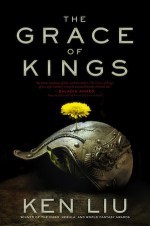
Twelve Kings of Sharakhai by Bradley P. Beaulieu
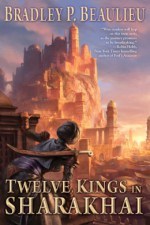
Duskfall by Christopher Husberg
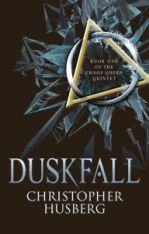
Signal to Noise by Silvia Moreno-Garcia
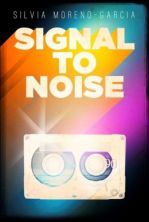
And The Traitor Baru Cormorant by Seth Dickinson — ooh, great choice, that title is sure suggestive. Not necessarily in a good way; this particular title is a turn off for me. Let’s see what Zieja guesses about this book given the cover:
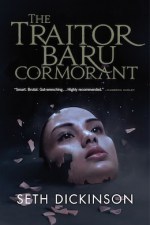
And here we go: “In this incredible book by Mr. Dickenson, who is, if you haven’t decoded this yet, Charles Dickens’ SON (DickenSON—get it?) we follow a blind mime through a passionate journey to reclaim the lost porcelain doll of his childhood. Only, since this is a fantasy novel, the porcelain doll is actually a magical familiar. The blind mime has been a wizard since birth, but never knew about it because he was raised by a baru—an extinct Australian crocodile—and a cormorant, which sort of also explains the mime thing. Since animals can’t talk. Right?”
Uh huh, I’m sure that’s close. Let’s see what Goodreads says, just out of curiosity:
THE TRAITOR BARU CORMORANT is an epic geopolitical fantasy about one woman’s mission to tear down an empire by learning how to rule it.
Tomorrow, on the beach, Baru Cormorant will look up from the sand of her home and see red sails on the horizon.
The Empire of Masks is coming, armed with coin and ink, doctrine and compass, soap and lies. They’ll conquer Baru’s island, rewrite her culture, criminalize her customs, and dispose of one of her fathers. But Baru is patient. She’ll swallow her hate, prove her talent, and join the Masquerade. She will learn the secrets of empire. She’ll be exactly what they need. And she’ll claw her way high enough up the rungs of power to set her people free.
Well, that doesn’t sound like a great book for me, especially with the creepy broken-doll cover.
Okay, of the five books here: I like the cover of Twelve Kings best. Here’s a post about that cover:
Paquette is one of my favourite artist, particularly for his work on Magic: The Gathering, and produces some of the best landscapes and cityscapes in the business. I also love that Çeda is front-and-centre on the cover, but doesn’t succumb to the traditional tropes that cover artists use to cue readers to her gender. She’s feminine, but not over-sexualized, and that sword looks like it can do some damage (though, Çeda’s no chump with just her fists!)
Actually, at the smaller size at which I first saw this cover, I didn’t realize the figure was a woman. Well, at the larger size, it’s obvious. I definitely prefer ambiguity to little bikini outfits.




